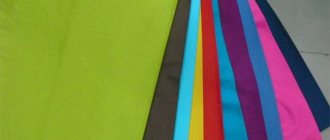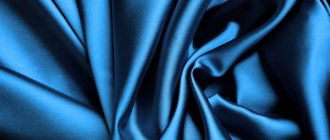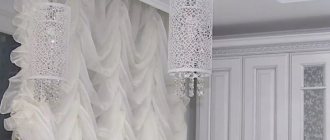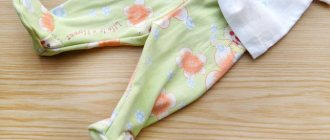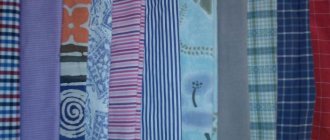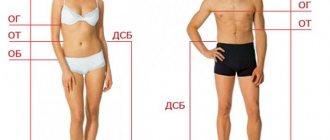Home / Natural fabrics
Back
Published: 12/10/2020
Reading time: 4 min
0
373
In everyday life, we often say “denim or denim” when we mean the favorite type of “bottom” among representatives of different generations. But in the vocabulary of fashion industry specialists there is another more general term - denim - this is a blue cotton material with a characteristic weave, color and density. Initially, durable work trousers were made from it. The same fashion standards call denim a lightweight version made from materials from this group. Let's look at the history of denim, its composition, manufacturing methods, dyeing, varieties (photos), their pros and cons, tips on selection and care.
- 1 Origin story
- 2 Production technology and composition 2.1 Types of weaving
- 2.2 Coloring
Origin story
The history of the fabric is connected with the French province of Nîmes, which was famous for its abrasion-resistant canvas. The material interested the newly minted American Levi Strauss, who decided to sew good-quality trousers for gold miners, cowboys and other laborers. The first grayish-beige or brick-brown products were liked by workers in various fields, including sugar plantations. The rough fabric protected the skin, withstood repeated washings and dried quickly.
Innovator Jacob Davis improved the trousers by proposing to secure the pockets with copper rivets. This version of trousers was liked first by residents of the western states, and then by the whole country. The range of the new material expanded after the “indestructible” pants acquired a dark or light blue color. The canvas itself was called “denim,” which translated from French means “from Nîmes,” referring to the province where this durable fabric was created.
Production technology and composition
Real denim is a natural material made from 100% cotton, which mainly comes from Asia or India. Premium denim comes from Mexican or Barbados cotton. The former has fibers up to 24 cm in length. The latter is produced at a high cost of labor and resources, but items made from it are distinguished by a unique color tint, which is very highly valued on the market.
Cheap cotton substitutes come from Zimbabwe, although the raw material itself is of excellent quality. The product is not listed in the World Cotton Classification, hence the low cost. It is used to make jeans that are available to a wide range of consumers. To obtain intensely colored fabric, it is dipped into a vat of dye solution more than 10 times.
Important. Branded jeans practically do not shrink (maximum 2%), because they are rolled using hot rubber rollers.
Cellulose is added to cheap raw materials to increase the strength of the material. To sew fashionable skinnies, synthetic fibers are added to cotton. But the classic option is always cotton fabric with a density of 170 to 400 g/m2.
Types of weaving
Denim is based on a twill type of weaving, in which the warp thread is submerged under every third weft fiber. Twill can be right-handed, with a diagonal directed from the bottom left to the top right. This type of weaving is typical for classic denim, as the most durable type. With the left type, the material is smoother and softer. Broken herringbone or zigzag twill produces a thin, smooth material. It appeared in 1964 as a trademark of the Wrangler company.
Coloring
The classic denim material is distinguished by the characteristic rich dark blue of the night or the soft blue of the morning sky. The reverse side is white. Dyeing occurs using indigo. Previously it was a natural dye, today synthetic is used. To produce black jeans, a dye based on sulfur compounds is used.
Kinds
One of the denim classifications is presented in the table.
Table. Types of denim depending on the density of denim fabric.
| Types of denim | Density (oz/sq yd) | Brief description of the canvas |
| Easy | 5─12 | Elastic, comfortable to wear, not restricting movement. |
| Average | 12─15 | The most common versatile and comfortable type of denim. |
| High Density | >15 | Strong, dense, wear-resistant material, but restricts movement. |
The unit of denim density is ounces/sq. yard, where:
- 1 yard is equal to 91.44 cm;
- 1 ounce equals 28.345 g.
For example, 14.5 oz/sqm fabric. yard weighs 410 g, and the total weight of the trousers is 0.8 kg.
Author:
Anastasia Kukushkina
I hope you enjoy the article I have prepared for you! If you find errors in it, write to me about it! I will answer any questions you have, ask them!

